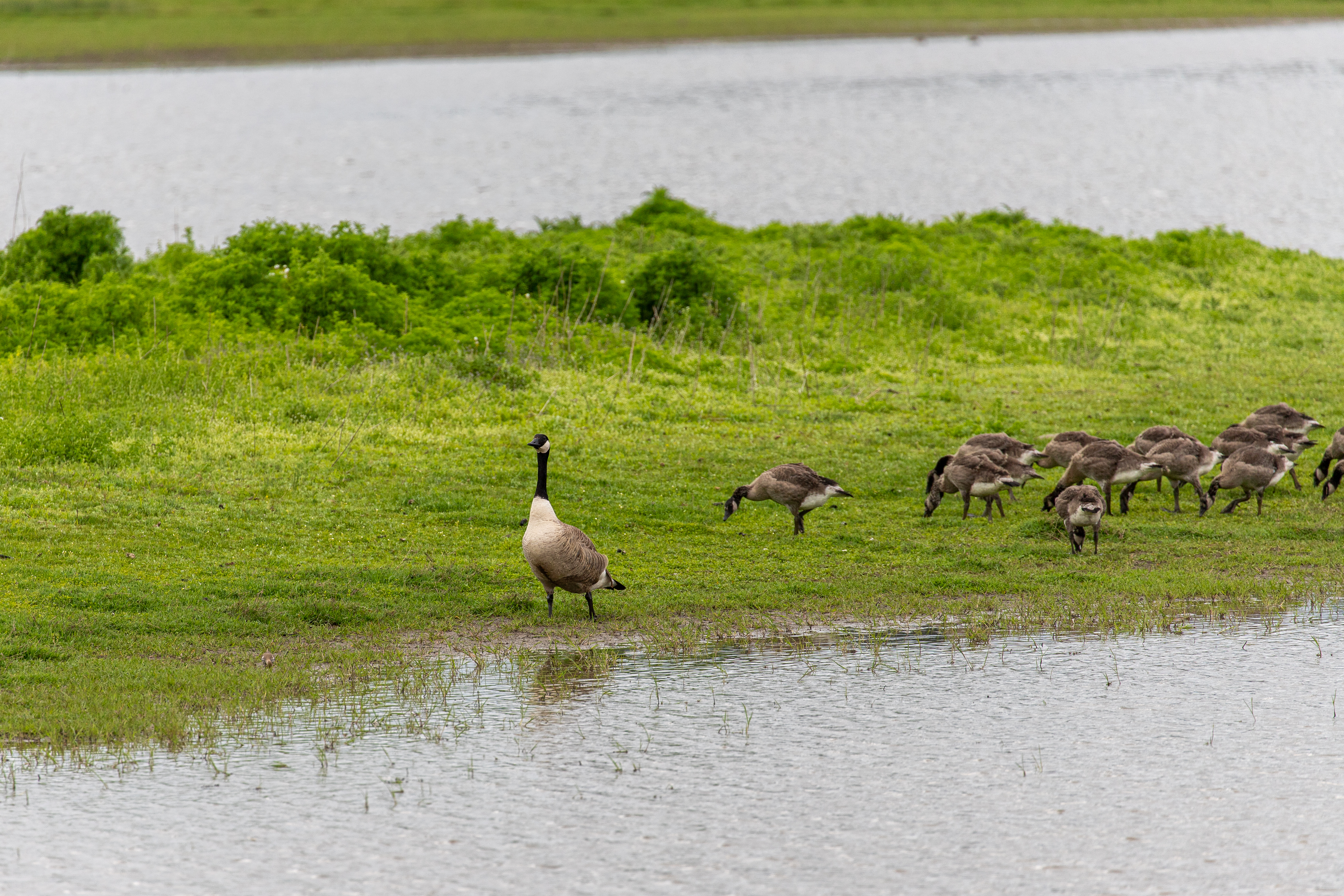Bird Blurbs, Canada Goose
 Bird Blurbs, post two! The Canada Goose (Branta Canadensis) (Sibley, 2016) is known for its expansive migration range and exceptional flocking behavior. Where the heron will find itself on a solo flight, the Canada Goose will hardly leave the earth without a wingman. On a recent trip to the TRNWR I was able to photograph a handful of families as their goslings turned to fledglings.
Bird Blurbs, post two! The Canada Goose (Branta Canadensis) (Sibley, 2016) is known for its expansive migration range and exceptional flocking behavior. Where the heron will find itself on a solo flight, the Canada Goose will hardly leave the earth without a wingman. On a recent trip to the TRNWR I was able to photograph a handful of families as their goslings turned to fledglings.
While the typical Canada Goose will move South for the winter and North for the summer, recent changes in farming practices and weather conditions have made the Northern resident goose more common (Cornell Lab). For the southern breeding goose, however, the annual trip northward is not worth the effort (Sibley, 2016).
Flocks are typically only formed for either migration or for breeding. Two years after hatching they from monogamous lifelong pairs that produce two to eight goslings in a lone clutch (Cornell Lab).
Thank you for reading the second installment of Bird Blurbs!
Bibliography
Sibley, D. A. (2016). The Sibley Field Guide to Birds of Western North America Second Edition. Knopf Doubleday Publishing Group Cornell Lab. Canada Goose Overview, All About Birds, Cornell Lab of Ornithology. (n.d.). Www.allaboutbirds.org. https://www.allaboutbirds.org/guide/Canada_Goose/overview
